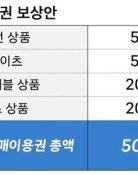Where Is the Killer?
The court held in the opinion, "The evidence submitted to this court does not warrant Lee`s guilt beyond the reasonable doubt. This court reviewed the newly submitted testimony of a Swiss forensic expert and the fire test as to the time the deceased Choi was supposed to be killed, which constituted the most important circumstantial evidence in this case. Upon this court`s reviewing, the evidence proffered by the prosecutor has significantly lost its credibility. Thus, this court is not able to find Lee guilty."
The long legal battle has been waged for 8 years. Lee was originally indicted without bail for first degree murder of his wife and daughter. The prosecution accused him of killing his wife and daughter in June of 1995 at their condo residence in Boolkwong Dong, Seoul. The trial court sentenced him to death, which was overturned by the appellate court. In the ensuing appeal, the Supreme Court of South Korea remanded the case to the Seoul High Court, the appellate court in charge, and suggested that Lee was guilty. Upon remand, the appellate court found him guilty again in February of 2001.
Lee`s defense attorney said that his client would commence a criminal as well as a civil action against the prosecution and the central government.
▽ Key legal issue = The most controversial part of this case lies in the time the victims were killed. In the morning on June 12, 1995, Choi and his daughter (then, one year old), or Lee`s wife and daughter, were found dead at Choi`s residence in Boolkwong Dong, Seoul. Specifically, at around 8:20 a.m. on that day, a security guard of the condominium where Choi lived found white smoke spewing out of the door of Choi`s residence. Upon the guard`s report, firefighters were dispatched and found the dead bodies of Choi and her daughter at around 9:40 a.m.
The DA`s Office and the police failed to find any direct evidence on the crime scene indicating the culprit.
All they could come up with was the testimony of South Korean forensic experts that, based on the livor mortis (i.e. the spots showing up on the dead body) and the rigor motis (i.e. stiffness of the dead body), the victims could have been killed some time before 7 a.m., when Lee did not leave the house for office. In other words, if the victims had been killed when Lee was at home, it would have been likely that Lee could have killed them.
▽ Grounds for acquittal = Receiving the remanded case in February of 2001, the Seoul High Court held, "The argument of the prosecution for Lee`s guilt was based on the indirect circumstantial evidence. It is hard to deny that one might suspect that Lee might have committed the murder. Nonetheless, the suspicion is not sufficient enough to warrant that Lee is guilty." Upon the continuing argument of the DA`s Office based on the result of a computer simulation test that the victims were killed before 7 a.m., the appellate court dismissed the allegation and held that "the computation was based on an input of incorrect numbers. Thus, this court finds the computation artificial and unsustainable in the court of law."
The court also ruled that "the facts point to the possibility that a third party committed the murder," citing the testimony of a Swiss forensic scientist that computation of a time of the death based on livor mortis and rigor motis is not correct and reliable due to numerous variables.
▽ Meaning of the ruling = The decision reconfirmed where the burden of proof is and the principle that the prosecution has to prove guilty beyond the reasonable doubt. Although the court did not dismiss the possibility that circumstantial evidence could prove a person guilty, it concluded that the evidence the prosecution has come up with is not sufficient to prove that Lee was the murderer.
Thus, the murder case has fallen into a maze, giving no indication who is the real killer. Even with Lee now vindicated, the real killer is out there at large, laughing at the authorities.
Wi-Yong Jung viyonz@donga.com







